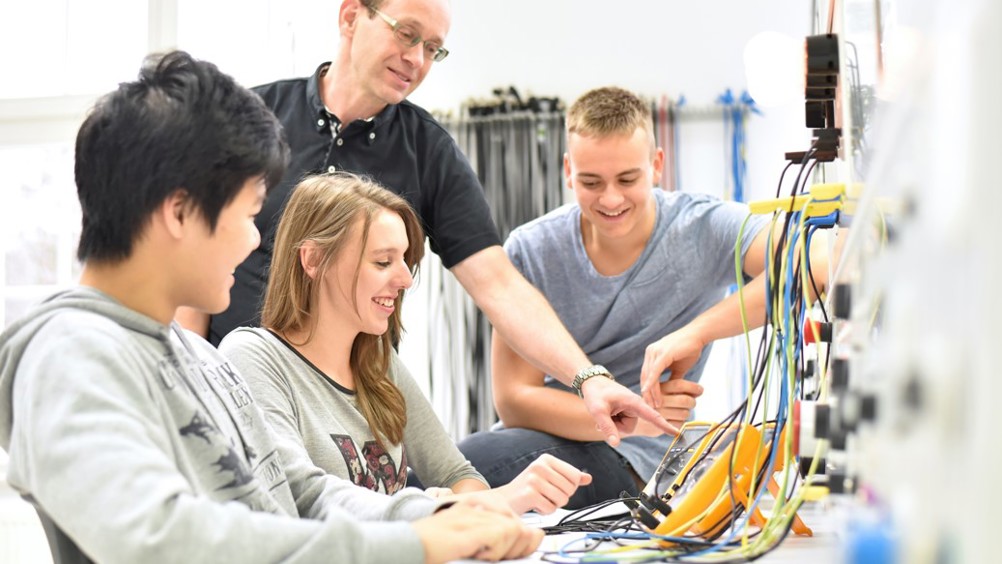Last month, we ran the first Tomorrow’s Engineers Live conference which saw the engineering community come together to discuss challenges, share insights, and look at the ways we can work more effectively together to ensure engineering outreach has an impact.
At Tomorrow’s Engineers Live, we shared some data and ideas about the nature and scale of engagement needed by different audiences in order to give every young person a good opportunity to progress into engineering and tech careers.
Back in 2020, we published an Impact Framework, developed with New Philanthropy Capital and with input from many other individuals and organisations, which attempted to describe the system within which engineering engagement takes place. We use it at EngineeringUK to help us more clearly and consistently articulate the intended impact of our work and evaluate ourselves against these goals. We hope that others find it useful.
The impact framework identifies key audiences, including: teachers; careers advisors and professionals; organisations and individuals involved in the funding, design or delivery of engineering engagement; parents and carers; and, of course, young people themselves. It also identifies the impact we may wish to have on different audiences – for example, that more teachers help their students to engage with engineering.
We’ve recently built on the impact framework by proposing a mechanism to achieve the desired outcome for each identified audience. Ultimately, we suggest, that if all of these things happen, young people would have a good opportunity to progress into engineering or technology.
Some of our proposals are based on what we think are reasonable suggestions – for example, we suggest that every primary school should have at least one teacher who promotes engineering and tech activities across the school. Others are more evidence based – for example, extrapolating from recommendations in the Gatsby Careers Benchmarks, we suggest that students should have 3 to 4 STEM engagements in secondary school with engineering and tech content. All of them are up for discussion and testing and we’ll be sharing this work on the Tomorrow’s Engineers website over the summer.
The thinking gets really interesting when we start putting numbers against the activity needed for each audience. We’ve used order of magnitude estimates so we don’t get bogged down in the detail of the numbers, but instead think through their implications. Taking the examples above, we suggest that, collectively, the sector would need to be working with about 20,000 primary school teachers on the one hand and delivering over 2 million STEM engagements in secondary schools on the other.
The scale of delivery needed is undeniably large – but I do not think this should be discouraging. It reinforces the importance of valuing the work of everyone seeking to inspire young people with and into engineering and technology. We really need to be supporting each other as much as we can! It’s also highlighted the benefit we would have from a better understanding of what we all do and coordinating more effectively.
At an organisational level, we, at EngineeringUK, are using these numbers to concentrate our minds on where we want to put our effort in to make a substantive difference, and where we will step back and support others instead.
I ran this session at Tomorrow’s Engineers Live with Yvonne Baker, CEO of STEM Learning, an organisation that knows how to work at scale through their support of STEM Ambassadors and professional development for STEM teachers across the UK. Yvonne led a discussion of how, given that we are some way off the scale of delivery needed, organisations may choose to target delivery to be most impactful against their goals. We must be thoughtful about how we balance our desire to reach all young people on the one hand, with targeting those from groups under-represented in engineering and technology on the other, especially given that the latter will likely need more tailoring and repeated encounters.
Yvonne posed some challenging and important questions, for example, to what degree might organisations want to focus activities in certain schools, so that students accumulate enough encounters to have significant impact. Likewise, might we want to target schools where we know there are the STEM teaching and options in place, so that young people inspired by engineering are able to convert that aspiration into educational and eventually career outcomes?
Many thanks to Network Rail and Shell for their support of Tomorrow’s Engineers Live and the Royal Academy of Engineering for hosting it. It was a great opportunity for thought-provoking conversations and enabled interested organisations, including many Signatories of the Tomorrow’s Engineers Code, to connect, share, learn and progress together.

Dr Hilary Leevers is CEO of Engineering UK





Poll: Should the UK’s railways be renationalised?
The term innovation is bandied about in relation to rail almost as a mantra. Everything has to be innovative. There is precious little evidence of...